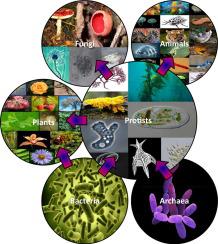Journal of Advanced Research ( IF 10.7 ) Pub Date : 2021-08-11 , DOI: 10.1016/j.jare.2021.08.005 Waqar Islam 1, 2, 3 , Hafiz Sohaib Ahmad Saqib 4 , Muhammad Adnan 5 , Zhenyu Wang 1, 2 , Muhammad Tayyab 6 , Zhiqun Huang 1, 2 , Han Y H Chen 1, 2, 7

|
Introduction
Soil biota plays a crucial role in the terrestrial ecosystem. There is growing momentum to understand the community structure and diversity of total belowground soil biota across large ecological scales. Soil biota follow divergent trends with respect to soil physiochemical properties in different ecosystems; however, little is known about their response to stand development across multiple soil depths in Chinese fir plantations, which is the most important tree species across all over China, popular for its timber production.
Objectives
Here, we investigated the community assembly of soil bacteria, fungi, archaea, protists and animals across three different vertical soil profiles (0–10, 10–20, 20–40 cm) using a chronosequence of Chinese fir representing five different stand ages (5, 8, 21, 27, 40 years) in South China.
Methods
High throughput illumine Hiseq2500 sequencing.
Results
Our results showed that soil biotic communities exhibited a decreasing trend in alpha diversity of bacteria, fungi, protists and animals with increasing soil depth; however, archaea showed an opposite trend. Most abundant soil bacterial, fungal, archaeal, protist and animal classes were Acidobacteriia, Agaricomycetes, Bathyarchaeia, Chlorophyceae and Clitellata, respectively. Correlation of vertical distribution of biotic communities and variations in soil physiochemical properties explained that total nitrogen (TN), available phosphorus (AP) and pH were the most influencing factors for changes in soil biotic communities. Although the stand age was a contributing factor for fungal and animal beta diversity, however, as compared to soil depth, it was not dominatingly influencing the structure of other biotic communities.
Conclusions
Collectively, these results reveal a new perspective on the vertical variation and distinct response patterns of soil biotic communities at a fine scale across different stand ages of Chinese fir plantations.

























 京公网安备 11010802027423号
京公网安备 11010802027423号